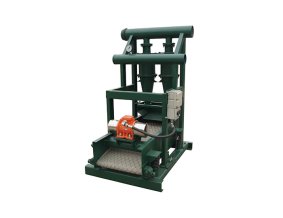The Importance of Liquid Mud Agitators in Modern Industry
In recent decades, the use of liquid mud agitators has become increasingly essential across various industries, notably in drilling and construction. Liquid mud, often composed of a mixture of water, clay, and additives, requires careful management to ensure optimal performance during drilling operations. The agitator serves a crucial role in maintaining the desired properties of the mud, facilitating even distribution of solids, and enhancing the mud\'s lubricating properties.
Liquid mud agitators are designed to create turbulence within the mud mixture. This turbulence helps in breaking up clumps of solids, ensuring that they remain suspended and uniformly distributed throughout the fluid. If not adequately agitated, solids can settle at the bottom, leading to uneven viscosity, which can significantly impact drilling efficiency and effectiveness. A well-maintained and efficient agitator helps to mitigate this risk by ensuring a consistent and homogeneous mixture, essential for operational integrity during drilling.
In the context of oil and gas drilling, the importance of a reliable agitator cannot be overstated. The drilling process involves high pressures and potential environmental hazards, making effective mud management critical. Liquid mud serves multiple functions, including cooling the drill bit, transporting cuttings to the surface, and forming a protective layer to prevent wellbore collapse. Effective agitation is crucial to maintain these properties, as improper mud consistency can lead to increased wear on drilling equipment, higher operational costs, and extended project timelines.
liquid mud agitator
The design of liquid mud agitators has evolved significantly, focusing on enhancing performance and efficiency. Modern agitators often feature advanced technologies, including variable speed drives that enable users to adjust the agitation intensity based on the specific characteristics of the mud being used. This adaptability is essential, as different drilling environments may require tailored mud properties. For instance, drilling in softer sediments may necessitate a different viscosity than drilling in harder formations. The ability to customize the agitation process allows drilling teams to adapt swiftly to changing conditions, improving response times and overall efficiency.
Furthermore, the integration of smart technologies in liquid mud agitators is enhancing their operational capabilities. Many modern agitators are equipped with sensors that provide real-time data on the viscosity and density of the mud. This data can be invaluable, allowing engineers to make informed decisions about mud composition and performance on the fly. By actively monitoring these parameters, teams can make adjustments to the agitation process, ensuring optimal mud characteristics throughout the drilling process.
In addition to oil and gas applications, liquid mud agitators are also finding uses in other sectors, such as construction, where they are crucial for preparing and maintaining cement slurries. The construction industry has increasingly turned to sophisticated mud systems to improve the quality and consistency of mixes, ultimately leading to stronger and more durable structures. As regulations around environmental protection and safety become stricter, the role of well-managed liquid mud systems will only grow in importance.
As we look to the future, the demand for efficient and versatile liquid mud agitators will continue to rise. With advancements in technology and increasing awareness of the need for sustainable practices, innovations in mud management will play a critical role in shaping the future of drilling and construction industries. The cornerstones of these advancements will undoubtedly be reliable liquid mud agitators, which ensure the effective utilization of resources while minimizing environmental impact. In this evolving landscape, the role of liquid mud agitators will remain integral, driving both efficiency and safety across multiple sectors.
 Linear Motion Shale Shaker In Drilling Rig
Linear Motion Shale Shaker In Drilling Rig  Oilfield Mud Cleaner
Oilfield Mud Cleaner  Drilling Fluid Decanter Centrifuge
Drilling Fluid Decanter Centrifuge  Drilling Mud Desander
Drilling Mud Desander  Hydrocyclone Desilter
Hydrocyclone Desilter  Centrifugal Pump/Centrifugal Mud Pump
Centrifugal Pump/Centrifugal Mud Pump  Shear Pump
Shear Pump  Jet Mud Mixer
Jet Mud Mixer  Horizontal Mud Agitator
Horizontal Mud Agitator  Constant Pressure Drilling Fluid Mud Gas Separator
Constant Pressure Drilling Fluid Mud Gas Separator  Mud Gun
Mud Gun  Mud Tank
Mud Tank  Solids Control System Vacuum Degasser
Solids Control System Vacuum Degasser  Flare Ignition Device
Flare Ignition Device  Diesel Tank
Diesel Tank  Submersible Slurry Pump
Submersible Slurry Pump 





































